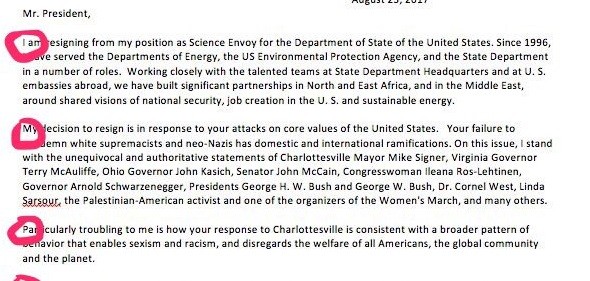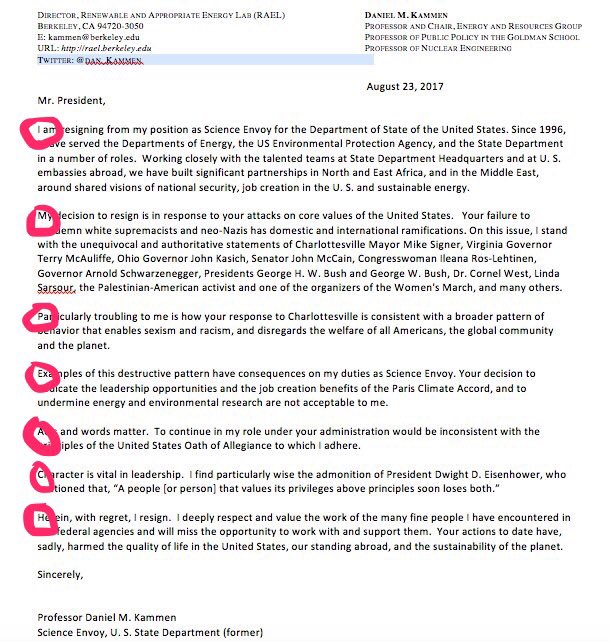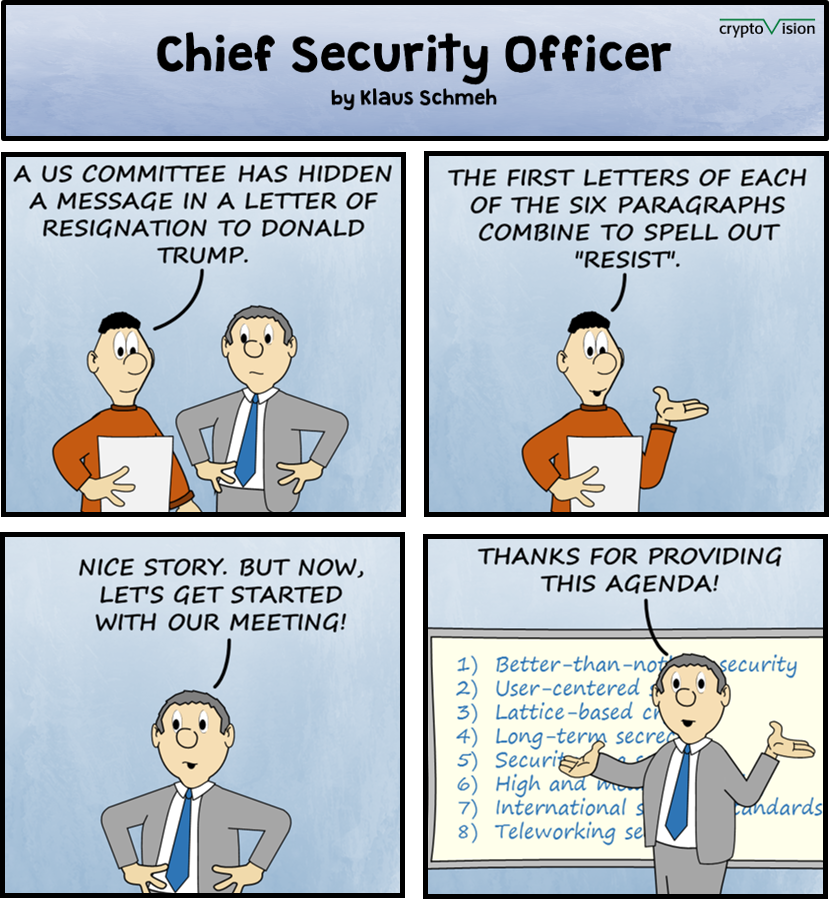Daniel Kammen, energy advisor of US president Donald Trump, has hidden an acrostic in his letter of resignation. He’s not the first one to do so.
Looking at the news currently coming from the US, one gets the impression that Donald Trump’s advisors are doing their best to advertise my new book.
My new book, titled Versteckte Botschaften, is about steganography (data hiding). It contains a chapter about acrostics (i.e., hidden messages comprised of starting letters). Last week one of Donald Trump’s advisory committees used this technique to hide the word RESIST in their resignation letter. They had resigned in response to the controversial remarks Trump made about the incidents in Charlotteville, Virginia.
Anosther acrostic in a letter of resignment
Now, another presidential advisor, energy professor Daniel Kammen, has resigned. In his letter of resignation an acrostic is contained, too (thanks to Dr. Ralf Bülow for the hint). Here’s Kammen’s letter:
The starting letters of each paragraph spell out the word IMPEACH. According to US law, an impeachment is the first step towards removal of the president from his office.
“My view on impeachment is perhaps less formal than if I was an elected member of Congress,” Kammen said in an interview with CNN, “but I don’t view what the President is doing as consistent with the best interests of the United States and the global community.”
Kammen published his resignation letter on Twitter, writing, “Mr. President, I am resigning as Science Envoy. Your response to Charlottesville enables racism, sexism, & harms our country and planet.” Kammen, who is married to an African-American woman, told CNN he had grown increasingly frustrated with the administration over its environmental and regulatory policies, as well Trump’s decision to pull out of the landmark Paris climate agreement.
More acrostics
My blog posts about acrostics have stimulated two of my readers to create acrostics themselves. Rich SantaColoma provided the following one:
Honestly, I don’t think
I would have noticed them.
Kids sometimes used them:
largely to hide a message,
at school, to their friends.
Unless it is pointed out, though,
Sometimes they go unnoticed.
Blog reader Karsten wrote:
Klausi,
Looks like this is a really nice area of cryptography/steganography.
Acrostics were new to me, well at lest that they are named so.
Up to now I haven’t seen any of these examples in real world.
So I really have to keep my eyes open for more of these!
Is there any example where this was used by real agents?
Really good to know that there is a book on this topic.
Or should I better buy it as an e-book?
Can’t really decide on that …
Keep up the good work with blooging on
ScienceBlogs
After all these acrostics written by my readers and renowned people, I couldn’t help to create one myself. I included it in the following Chief Security Officer cartoon:
More episodes of Chief Security Officer are available here (on Twitter). Please retweet them if you like them.
Follow @KlausSchmeh
Further reading: How a German World War II spy hid a message in a love letter
Linkedin: https://www.linkedin.com/groups/13501820
Facebook: https://www.facebook.com/groups/763282653806483/






Kommentare (2)